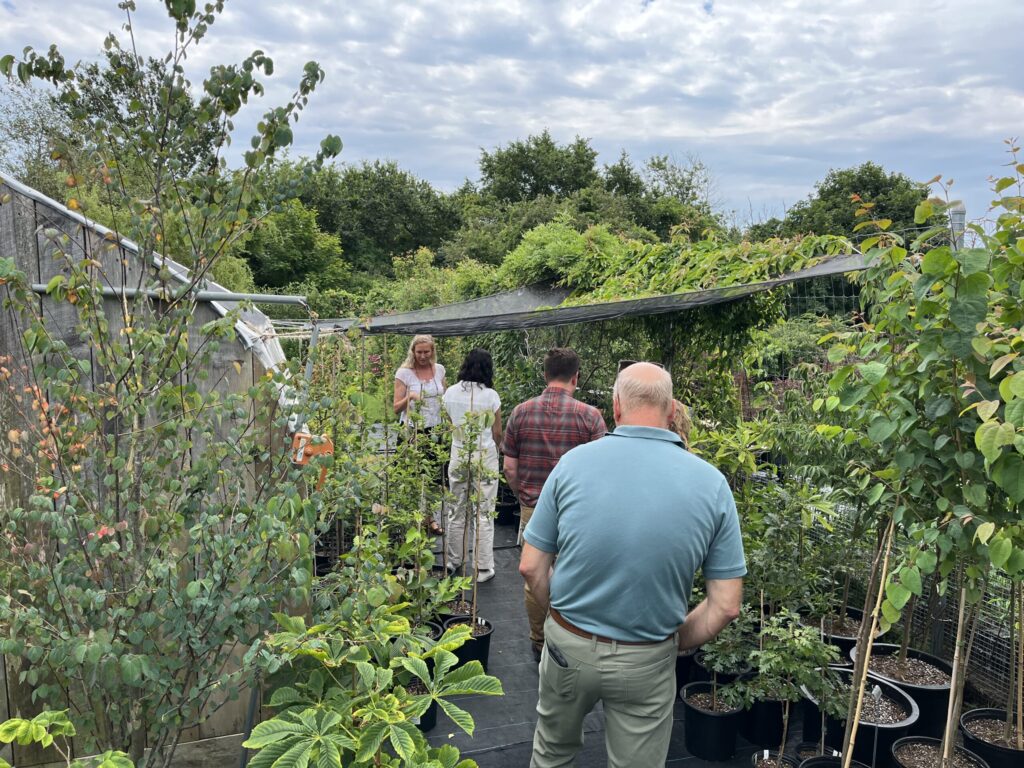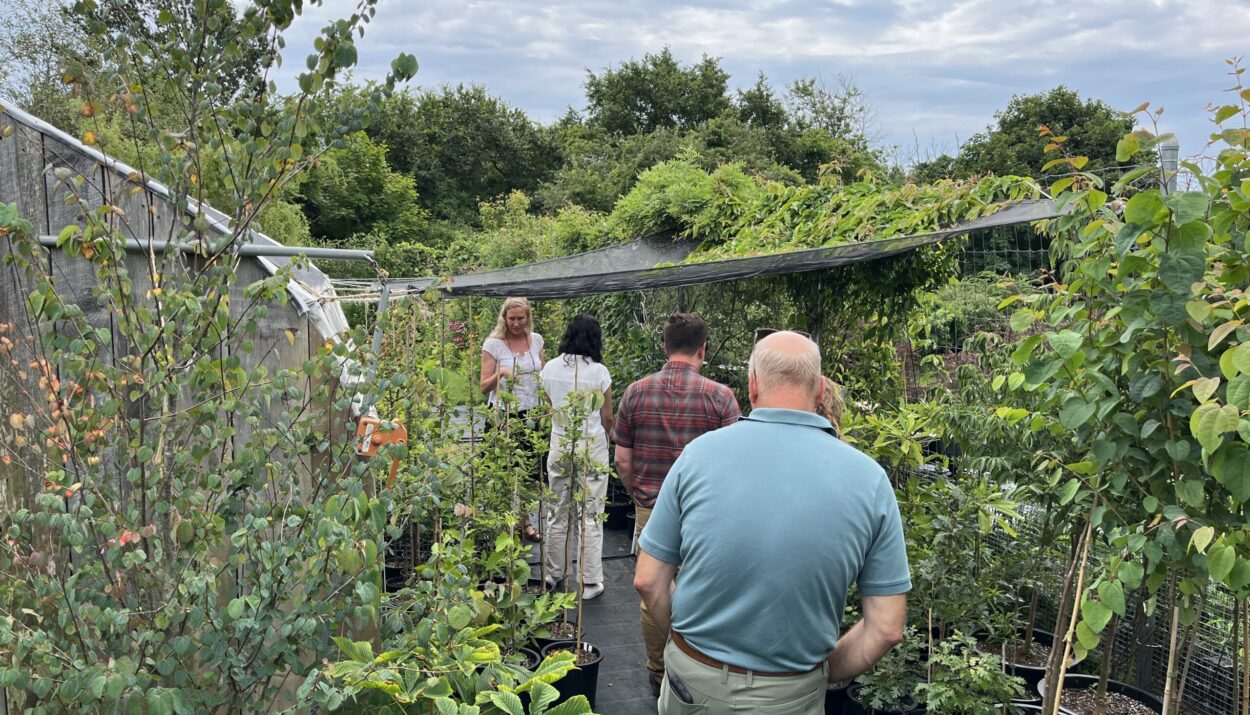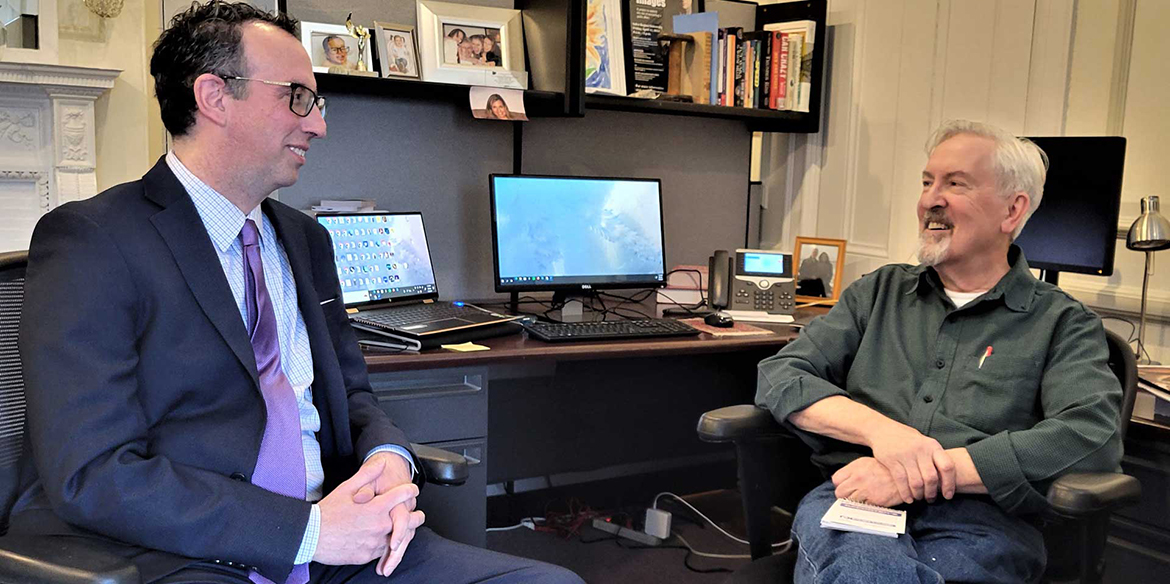‘Ideally, we’re improving human health in the communities.’
Originally published by ecoRI News, a nonprofit newsroom covering environmental news in Rhode Island. Read more at ecoRI.org
NEWPORT — Eight Rhode Island municipalities are hoping trees can help remediate issues that have plagued their communities for decades. Central Falls, Newport, Pawtucket, Warren, and Westerly, with three more pending, are collaborating with the Rhode Island Department of Environmental Management and the Green Infrastructure Center (GIC) to deliver a sweeping analysis and implementation plan for each municipality.
A $1.2 million grant from the U.S. Department of Agriculture’s Forest Service, with another $300,000 in congressional funding, will get them there. Over the next five years each municipality will develop a strategic canopy plan and map its tree canopy cover; plant trees; and evaluate and develop tree-friendly municipal codes, ordinances, and policies; and engage and educate the public.
The work builds on American Forests’ Tree Equity Score map from 2019, which details the inequities in tree cover in urban areas, according to GIC community forestry planner Molly Henry. This unbalanced arbor inventory is one reason the state suffers the impacts of climate change so heavily, especially in urban areas. Since trees remove air pollutants and lower temperatures and help mitigate stormwater runoff and erosion, among other benefits, municipal and state officials hope this work is an enduring step toward reducing those impacts, especially in the low-income neighborhoods that experience greater climate change disruption.
“Ideally, we’re improving human health in the communities, reducing heat islands, reducing stormwater issues, improving property values, and making the communities a more equitable place,” GIC community forester A.J. Elton said.
The catch is that many communities don’t have an urban forestry program, and if they did, they couldn’t execute it due to staff and budget restrictions. The grant and the program it supports is an opportunity to jump-start this work, according to Elton.
Planners and tree wardens in the five municipalities are meeting with Elton and Henry on a rolling basis to learn what they have, what they could have, the challenges, and where the biggest impacts would be. Many have dramatically common disparities, Elton said, where one side of town has trees and the free services they provide and the other doesn’t — often areas with higher concentrations of people of color and lower incomes.
Newport is a prime example of this dichotomy. While it appears wealthy, the median household income is $81,330, $40 lower than the state median income. It also suffers from increased off-street parking and fewer permeable spaces in wealthier residential properties, surging home construction and road work, and increased flooding — all of which damage its tree population.
“In replanting our parks and public parkways, you think Memorial Boulevard, America’s Cup Avenue, and we’ve done a pretty good job of restocking those areas. But the challenge remains that we’re losing canopy in our residential neighborhoods,” said Scott Wheeler, Newport’s superintendent of parks, grounds, and forestry. “For tree equity, we’re really not where we’d like to be, particularly in some of our North End neighborhoods.”

At Newport’s first workshop with GIC, in July, Wheeler and assistant planner Hayden McDermott advocated for an updated tree protection ordinance and new landscape or permeable surface ordinance to protect trees on private land; development of a forest management plan; communication with planning and zoning boards to consider a tree impact assessment for proposed construction projects; increasing the tree canopy in the diverse North End; and boosting public awareness and advocacy.
“We’re all very familiar with our stormwater challenges, and one of the resources [with the grant] is advanced mapping to look at where we could increase canopy cover to have benefits for stormwater and reduce flooding,” Wheeler said. “There is changing land use on existing properties. And the same permeable space that we’re losing is making runoff worse, is also reducing the space for our urban forest. So, we’ve got less trees to intercept water, less soil to act as a sponge to slow down and absorb water.”
This is all one urban ecosystem that interacts with each other, Wheeler added. “[Y]ou can’t separate trees from stormwater, or the environment, or our gardens. I think we’re very aware that no one necessarily wants someone in the government telling them what they can or can’t do with a tree on private property. But when it starts to flood your neighbor’s property, or pollute our bay or have larger impacts on our community, parcel by parcel, we’re changing the way the land functions.”
GIC previously created a set of tree canopy analysis maps for East Providence, said Johanna Walczak, the city’s planner, which provided the city with valuable data.
“These maps … will help us to strategically plan where and how to grow our tree canopy cover and better manage our urban forest,” she said. “As we implement [the grant] over the next five years, the tree canopy analysis maps will help us identify priority locations for planting 1,500 new trees … with emphasis on disadvantaged neighborhoods with low Tree Equity Scores.”
Robert Allard, DEM’s community forestry program coordinator, said Rhode Island’s tree status is highly variable. Urban forests depend on their communities to manage them proactively, he said, and to consider the needs of the trees in addition to municipal constraints, such as not planting red maples, for example, in a sidewalk location that is too small and restrictive for the size of an adult tree.
“The eastern half [of Rhode Island] is generally more urbanized than the western half, and even within cities, there are areas that have more trees than others, and that usually follows trends of economic disparities,” Allard said. “We have an arborist workshop every spring, and a tree warden workshop every fall, plus this grant, so we’re just trying to overall improve the quality of our urban forest care and practices.”






